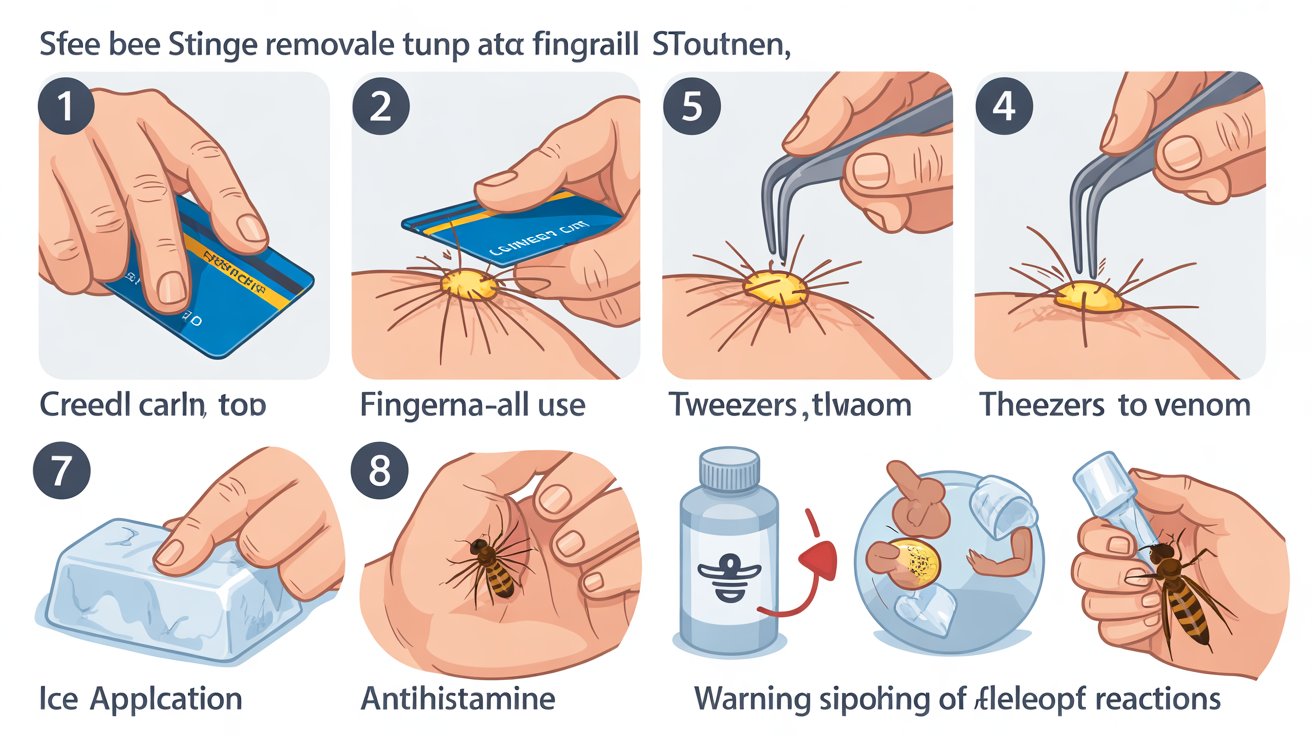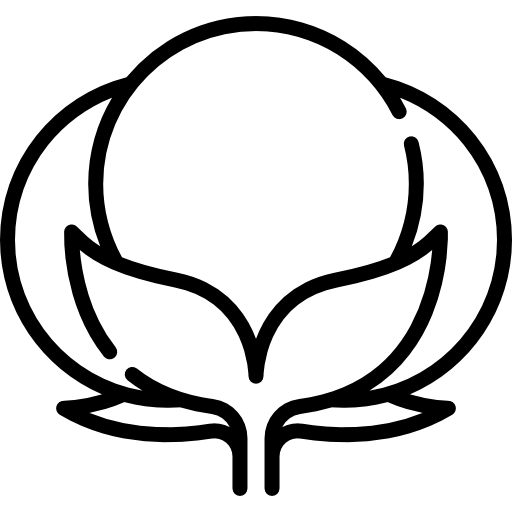Saviez-vous que lorsqu'une abeille pique, son dard reste planté dans votre peau et continue de libérer son venin pendant quelques minutes ? Savoir retirer un dard d'abeille rapidement et en toute sécurité est important pour les apiculteurs comme pour les amateurs de plein air. Ce guide vous explique étape par étape comment retirer un dard. Il couvre les précautions à prendre, les techniques appropriées et comment traiter efficacement les piqûres d'abeilles avec un minimum d'inconfort.
Précautions de sécurité
Porter des vêtements de protection : Il est important de porter des vêtements de protection adaptés en cas de piqûre d'abeille. Les personnes travaillant avec les abeilles, comme les apiculteurs et celles qui travaillent à proximité des ruches, doivent porter des vêtements de protection. combinaisons d'apiculteur, voiles, gantset des chaussures fermées. Ces articles aident à prévenir les piqûres en créant une barrière physique.
Évaluation du comportement de l'abeille : Avant de retirer le dard d'une abeille, il est important d'évaluer son comportement. Les abeilles agitées ou agressives sont plus susceptibles de piquer. Observez-la calmement et attendez qu'elle s'immobilise avant de retirer le dard.
Assurer un environnement stable et calme : Il est important de privilégier un environnement calme et stable pour retirer un dard. Les abeilles peuvent s'agiter en cas de mouvements brusques ou de bruits forts. Pour retirer un dard en toute sécurité, privilégiez un endroit calme et tranquille afin de minimiser les risques de piqûres répétées.
Identifier le dard
Reconnaître le dard d'abeille : Pour retirer correctement un dard d'abeille, il faut d'abord l'identifier. Un dard d'abeille est une petite structure pointue qui reste dans la peau après une piqûre. L'objet visible après la piqûre est généralement petit, sombre ou transparent et ressemble à une écharde. Il se trouve généralement à l'endroit de la piqûre.
Différenciation entre les piqûres d'abeilles et de guêpes : Malgré leurs similitudes, il est important de distinguer les dards d'abeille et de guêpe. Le dard d'abeille possède des barbillons destinés à se loger dans la peau et à rester attaché à l'abeille après la piqûre. Le dard de guêpe diffère des autres dards par son absence de barbillons. Cela signifie que les guêpes peuvent piquer plusieurs fois sans difficulté.
Comprendre la structure barbelée des dards d'abeilles : Les dards des abeilles sont dotés de barbillons orientés vers l'arrière, ce qui leur permet de rester bien en place après une piqûre. Lors du retrait, il est important d'être prudent et d'éviter de comprimer la poche à venin. Cela pourrait libérer davantage de venin dans la plaie. Une technique appropriée est essentielle pour retirer un dard efficacement et en toute sécurité.
Lire aussi : Les abeilles peuvent-elles piquer à travers une combinaison d’apiculteur ?
Outils et matériaux appropriés
Choisir les bons outils : Pour retirer un dard d'abeille efficacement et en toute sécurité, il est important d'utiliser les bons outils. Trois outils sont souvent utilisés : une pince à épiler, une carte de crédit ou un ongle. La pince à épiler permet un retrait précis et contrôlé. Une carte de crédit ou un ongle peuvent être utilisés pour gratter délicatement le dard. Le choix de l'outil dépend de vos préférences et de ce dont vous disposez.
Assurer un équipement propre et stérilisé : Il est important de nettoyer et de stériliser tout outil avant de l'utiliser. La propreté permet de prévenir l'infection à l'endroit de la piqûre. Pour réduire le risque d'introduction de bactéries nocives dans la plaie, il est important de stériliser les pinces à épiler ou les cartes de crédit avec de l'alcool isopropylique ou un désinfectant similaire avant de les utiliser.
Avoir des fournitures de premiers secours à portée de main : Il est conseillé de garder à portée de main les fournitures de premiers soins de base lorsque vous travaillez à proximité des abeilles.Vous pourriez avoir besoin de fournitures telles que des lingettes antiseptiques ou du savon doux pour nettoyer la zone affectée, des pansements adhésifs ou de la gaze pour couvrir la plaie, ainsi que des analgésiques ou des antihistaminiques en vente libre pour soulager l'inconfort ou les réactions allergiques. Être préparé vous permettra de recevoir des soins rapides et appropriés en cas de piqûre d'abeille.
Procédure de retrait du dard
Gratter doucement le dardPour retirer un dard en toute sécurité, il est important d'agir avec douceur et précaution. Pour retirer un dard, utilisez une pince à épiler, une carte de crédit ou un ongle. Approchez le dard en biais et grattez-le dans la direction opposée à l'entrée du dard. Ne pressez pas, car cela pourrait libérer davantage de venin.
Éviter de presser ou de pincer le sac à venin : Il est important de ne pas comprimer ni pincer la poche à venin reliée au dard. Appuyer sur la plaie peut entraîner une pénétration accrue de venin, ce qui peut aggraver la douleur et augmenter le risque de réaction allergique. Retirez le dard sans appuyer sur la zone affectée.
Garder la main ferme et faire preuve de patience : Retirer un dard peut demander de la patience et de la précision, surtout s'il est profondément enfoncé. Si vous précipitez le processus, vous risquez de ne retirer que partiellement l'objet ou de ressentir une gêne accrue. Restez calme et serein pendant l'intervention pour une extraction réussie et sans douleur. Après avoir retiré l'objet, utilisez un savon doux ou des lingettes antiseptiques pour nettoyer la zone. Soyez attentif à tout signe de réaction indésirable.
Lire aussi : Comment fonctionnent les ruches ?
Suivi et premiers secours
Nettoyage de la zone affectée avec de l'eau et du savon : Après avoir retiré un dard, il est important de nettoyer la zone avec de l'eau et un savon doux. Cela permet de prévenir l'infection en éliminant les contaminants potentiels de la peau.
Appliquer une compresse froide pour réduire la douleur et le gonflement : L'application d'une compresse froide peut réduire efficacement la douleur, les démangeaisons et le gonflement au niveau de la piqûre. Vous pouvez soulager la piqûre en utilisant un linge imbibé d'eau froide ou une poche de glace enveloppée dans un linge. Utilisez la compresse froide pendant de courtes périodes pour éviter les lésions cutanées dues à une exposition prolongée au froid.
Options de soulagement de la douleur et d'antihistaminiques en vente libre : Vous pouvez utiliser des analgésiques en vente libre comme l'ibuprofène ou le paracétamol pour soulager la douleur et l'inconfort. Si vous ressentez des démangeaisons ou des signes de réaction allergique comme de l'urticaire ou des difficultés respiratoires, vous pouvez prendre un antihistaminique appelé diphénhydramine (Benadryl) selon les instructions. Veillez à toujours respecter les doses recommandées et, si vos symptômes s'aggravent ou persistent, consultez un professionnel de santé.
Surveillance des réactions allergiques
Reconnaître les symptômes courants des réactions allergiques : Il est important de connaître les symptômes typiques d'une réaction allergique après une piqûre d'abeille. Parmi les symptômes courants, on peut citer un gonflement, une rougeur, des démangeaisons, de l'urticaire et une légère douleur au point de piqûre. Chez les personnes allergiques, des symptômes plus graves peuvent apparaître rapidement. Ils peuvent inclure des difficultés respiratoires, un gonflement du visage ou de la gorge, des étourdissements et une baisse de la tension artérielle.
Quand consulter immédiatement un médecin : Il est important de consulter immédiatement un médecin en cas de réaction allergique grave, également appelée anaphylaxie. Les signes d'anaphylaxie peuvent inclure des difficultés respiratoires, une sensation de danger imminent, un évanouissement ou une hypotension artérielle. Si vos symptômes légers persistent ou s'aggravent après les premiers soins, il est important de consulter immédiatement un médecin pour éviter que la réaction ne s'aggrave.
Porter un auto-injecteur d'épinéphrine (en cas d'allergie) : Les personnes allergiques aux piqûres d'abeilles doivent toujours avoir sur elles un auto-injecteur d'épinéphrine, comme un EpiPen, conformément aux directives de leur professionnel de santé. Cette méthode peut sauver des vies en cas de réaction allergique grave. Elle procure un soulagement immédiat en stoppant la réaction allergique. Il est important de consulter un professionnel de santé concernant l'utilisation et le moment appropriés de l'auto-injecteur.
Réflexions finales
En conclusion, il est essentiel de savoir comment retirer un dard d'abeille en toute sécurité. Il est possible de traiter efficacement et en toute sécurité les piqûres d'abeilles en suivant les procédures appropriées, en utilisant les bons outils et en pratiquant les premiers secours. Il est important de savoir identifier les réactions allergiques et d'avoir le matériel médical adéquat à portée de main, car cela peut sauver des vies en cas d'urgence. Adopter des mesures responsables et éclairées peut contribuer à protéger les abeilles et à accélérer leur guérison.












